We start with the definition of radiated power density:
$$
P_{dens}\ [W/m^2]= \frac {EIRP} {4\pi d^2}
$$
Which can also be expressed in terms of the radiated electric field and the impedance of free-space, \$ Z_{0,FS} \approx 120\pi \ \Omega \$:
$$
P_{dens}\ [W/m^2]= \frac {E^2} {Z_{0,FS}}
$$
Thus:
$$
\frac {E^2} {Z_{0,FS}} =\frac {EIRP} {4\pi d^2}
$$
We isolate E and take logarithms:
$$
\begin{align}
20 \log(E\ [V/m]) &= 10 \log(EIRP\ [W]) - 20 \log(d\ [m]) + 10 \log \left( \frac {Z_{0,FS}} {4\pi} \right) \\
E\ [dBV/m] &= EIRP\ [dBW] - 20 \log(d\ [m]) + 14.8
\end{align}
$$
Now we can convert the units of E and EIRP to whatever we need. To suit your expression:
$$
\begin{align}
dBV/m &= dB \mu V/m - 120 \\
dBW &= dBm - 30
\end{align}
$$
Thus:
$$
\begin{align}
E\ [dB \mu V/m] &= EIRP\ [dBm] - 20 \log(d\ [m]) + 14.8 + 120 - 30 = \\
&= EIRP\ [dBm] - 20 \log(d\ [m]) + 104.8
\end{align}
$$
So that's where the 104.8 comes from.
It may seem that this equation is not frequency dependent, but that would be a false claim. Why? Because EIRP is the product of the transmitted power and the transmission antenna gain. In any practical transmitter BOTH magnitudes will be frequency dependent.
However, the transmitter (power amp and antenna) may be designed to be wideband enough so as to ignore the frequency dependency over its entire operating bandwidth.
